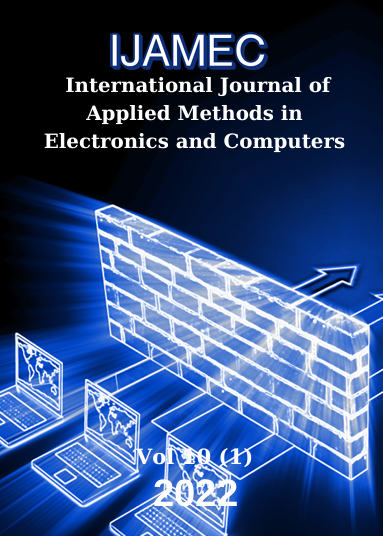A Product Production and Transfer Application with Blockchain
DOI:
https://doi.org/10.18100/ijamec.1084637Keywords:
Bitcoin, Blockchain, Cryptocurrencies, Peer-to-Peer, Transaction, TransferAbstract
In traditional software systems, user information is kept in databases of the system. Much of this information is critical. Theft of data and getting into the hands of malicious people can cause big problems. The most efficient way to get rid of this is to keep the information encrypted, to decrypt the encrypted information with private keys that are not registered in the system, to never access the encrypted information without the private key, and to use it in platform-independent systems. Blockchain technology offers us this system. Blockchain technology, which can be applied very easily in economic fields or systems with transparent data policy of priority, is also the basic structure of cryptocurrencies. Its importance is increasing day by day in the world and it is increasing its weight in banking-finance, voting, asset management and company-specific software systems. In this study, encryption methods of Blockchain technology, data verification approaches, wallet creation, the roles of public and private keys in wallets in the system, their authorization, the formation of transfers within a certain rule and their verification by a third party after the transfer are discussed theoretically and practically. An application was developed on peer-to-peer transfers of white goods production and products, which were fictionalized as a scenario, and Blockchain technology was applied.Downloads
References
S. Nakamoto, “Bitcoin: A peer-to-peer electronic cash system,” Decentralized Business Review, 21260, 2008.
Ç. Karahan and A. Tüfekci, “Blokzincir Teknolojisinin İç Denetim Faaliyetlerine Etkileri: Fırsatlar ve Tehditler,” Denetişim Dergisi, 19:55-72, 2019.
The Bitcoin website. [Online]. Available: https://www.bitcoin.com/info/what-is-bitcoin-cash, Accessed on: Feb. 26, 2022.
Andreas M. Antonopoulos, “Mastering Bitcoin,” O’Reilly, pp. 330, 2014.
K. Sagona-Stophel, “Bitcoin 101: How to get started with the new trend in virtual currencies”, White Paper, Thomson Reuters, 2015.
H.W. Lenstra Jr, “Factoring integers with elliptic curves,” Annals of mathematics, 649-673, 1987.
S.B. Akben, and A. Subaşı, “RSA ve Eliptik Eğri Algoritmasının Performans Karşılaştırması,” KSÜ Fen ve Mühendislik Dergisi, 8(1)-2005,35-40, 2005.
A. Porat, A. Pratap, P. Shah, and V. Adkar, “Blockchain Consensus: An analysis of Proof-of-Work and its applications,” 2017
S. Erölmez Durbilmez and S. Yılmaz Türkmen, “Blockchain Teknolojisi, Türkiye Finans Sektöründeki Durumu,” Research of Financial Economic and Social Studies (RFES), Cilt4/Sayı 1, 2018.
A. Usta and S. Doğantekin, “Blockchain 101,” MediaCat Kitapları, İstanbul, 2017.
Binance Academy website. [Online]. Available: https://academy.binance.com/en/articles/positives-and-negatives-of-blockchain?, Accessed on: Feb. 26, 2022
A. Çarkacıoğlu, “Kripto-Para Bitcoin,” SPK Araştırma Dairesi, 2016.[Online]. https://www.spk.gov.tr/SiteApps/Yayin/YayinGoster/1130
CoinTelegraph, “%51 Saldırısı (Attack 51%) Nedir? Bitcoin'e %51 Saldırısı Yapmak Mümkün mü?,” [Online]. Available:https://tr.cointelegraph.com/news/what-is-51-attack-how-much-it-costs-to-launch-a-51-attack-bitcoin, Accessed on: Feb. 28, 2022
Blockchain website. [Online]. Available: https://www.blockchain.com/charts/blocks-size, Accessed on: Feb. 26, 2022
Downloads
Published
Issue
Section
License
Copyright (c) 2022 International Journal of Applied Methods in Electronics and Computers

This work is licensed under a Creative Commons Attribution-ShareAlike 4.0 International License.





